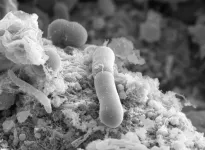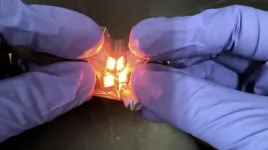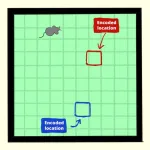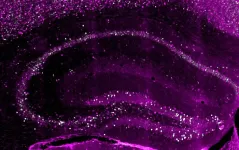(Press-News.org) KENNEDY SPACE CENTER (FL), August 15, 2024—The International Space Station (ISS) National Laboratory is collaborating with NASA on a solicitation for space-based research addressing some of the most significant diseases of our time—such as cancer, cardiovascular disease, and neurodegenerative disease. ISS National Lab Research Announcement (NLRA) 2024-09: Igniting Innovation: Science in Space to Cure Disease on Earth, released in partnership with NASA’s Biological and Physical Sciences division, is aimed at overcoming challenges hindering progress in disease prevention, diagnosis, and treatment. This NLRA will offer up to $4 million in total funding for an expected two to three awards for multiflight translational and transformative research and technology development.
Through this joint solicitation, the ISS National Lab and NASA seek projects that leverage the space environment to improve existing or develop new technologies that help solve health problems on Earth. Therapies for cancer and cardiovascular, immune, muscle and bone, and neurodegenerative diseases face obstacles that thwart scientific advancements and the translation of research findings into clinical applications. These challenges frequently overlap and share common elements, despite the complexity and variability of mechanisms within and among these diseases. Many of these challenges can be mitigated using accelerated disease models in microgravity through ISS National Lab resources.
This NLRA aims to foster collaboration between academia, industry, and government to develop innovative, commercially viable products and technologies to improve medical outcomes on Earth. Below are topics of particular interest for this NLRA:
Enhanced Models to Study Disease Mechanisms: It is difficult to unravel the intricate dynamics of disease onset and progression and to identify effective therapeutic targets. Leveraging microgravity to improve cell-based models like tissue chips and organoids could deepen understanding of disease mechanisms and lead to personalized therapies.
Population and Disease Heterogeneity: Population and disease heterogeneity pose significant obstacles to drug Variability in genetic and demographic factors, such as age and sex, leads to differing treatment responses across individuals. Genetic and phenotypic diversity in diseases themselves must also be considered.
Drug Screening and Development: Microgravity enables high-throughput drug screening in 3D cell cultures and tissue models that more accurately simulate the human body. Innovative approaches and technologies to identify preclinical drug candidates are needed to accelerate development of new, more effective therapeutics.
Drug Delivery: Innovation in drug delivery, such as nanotechnology and targeted therapies, is vital to enhance treatment precision and reduce side effects. Additionally, the absence of well-defined biomarkers complicates treatment selection, and innovative strategies for biomarker discovery are needed to improve treatment outcomes.
Drug Resistance and Toxicity: Drug resistance poses significant challenges in treating many diseases. For example, cancer cells can become resistant due to genetic mutations or changes in signaling pathways, decreasing drug efficacy. Additionally, the toxicity of treatments like chemotherapy requires careful balancing of efficacy and adverse effects.
Last month, at the annual ISS Research and Development Conference in Boston, the ISS National Lab and NASA announced five projects selected through the inaugural Igniting Innovation NLRA, which sought to harness the unique space environment to advance cancer research to benefit patients on Earth.
“We are proud to collaborate again this year with NASA’s Biological and Physical Sciences division on this important initiative to bring the transformative power of space-based inquiry into the fight against diseases that touch all of our lives,” said ISS National Lab Chief Scientific Officer Michael Roberts. “Our inaugural solicitation in 2023 resulted in the selection of five innovative concepts to leverage microgravity and the space station to benefit patients on Earth. We look forward to enabling access to even more ideas that ignite innovation and fuel research and development for the benefit of humanity.”
“Space-based research has a long history of contributing to advancements on Earth,” said Lisa Carnell, director of NASA’s Biological and Physical Sciences division. “Continuing the Igniting Innovation solicitation could contribute to the next big leap in disease therapies. We are excited to collaborate with the ISS National Lab on this endeavor to help address some of the biggest health challenges facing the world today.”
This research announcement will follow a three-step proposal submission process (Step 1A: Concept Summary, Step 1B: Technology Roadmap, and Step 2: Full Proposal). Step 1A: Concept Summaries must be submitted by end of day on September 26, 2024.
Those interested in learning more about this research announcement can register for a webinar hosted by the ISS National Lab on August 22, 2024, at 1 p.m. EDT.
For more information on this funding opportunity and how the space-based environment can accelerate research and technology development for the benefit of life on Earth, please visit the official solicitation page.
Download a high-resolution photo: Igniting Innovation 2024
END
Science in Space to Cure Disease on Earth—the International Space Station National Lab and NASA announce new funding opportunity
Joint solicitation will award up to $4 million for biomedical R&D leveraging the orbiting laboratory
2024-08-15
ELSE PRESS RELEASES FROM THIS DATE:
YALE NEWS: Sick days: Assessing the economic costs of long COVID
2024-08-15
A new Yale study finds that the effects of long COVID have caused many Americans to miss extensive work time, and that 14% of study participants reported not returning to work in the months after their infection.
The findings, published recently in PLOS One, suggest that long COVID may have affected millions of Americans and generated steep economic costs, highlighting the need for policies to support those with the condition, researchers said.
The study drew on a long-term survey of individuals who contracted COVID-19 — dubbed Innovative ...
Equity weighting increases the social cost of carbon, warrants careful dialogue
2024-08-15
In a Policy Forum, Brian Prest and colleagues discuss how new regulatory guidelines from the U.S. Office of Management and Budget (OMB), known as Circular A-4, could impact the social cost of carbon (SCC). The new equity weighting approach recommended by the OMB, they say, leads to a dramatic increase in SCC estimates, and thus requires careful dialogue and discussion. The social cost of carbon is an estimate of the economic damage caused by emitting an additional ton of carbon dioxide into the atmosphere. It helps guide decisions about balancing the costs of reducing emissions with the benefits of mitigating climate change. Traditionally, ...
Chicxulub impactor was a carbonaceous-type asteroid from beyond Jupiter
2024-08-15
Scientists have pinpointed the origin and composition of the asteroid that caused the mass extinction 66 million years ago, revealing it was a rare carbonaceous asteroid from beyond Jupiter, according to a new study. The findings help resolve long-standing debates about the nature of Chicxulub impactor, reshaping our understanding of Earth's history and the extraterrestrial rocks that have collided with it. Earth has experienced several mass extinction events. The most recent event occurred 66 million years ago at the boundary between the Cretaceous and Paleogene eras (K-Pg boundary) and resulted in the loss of roughly 60% of the planet’s species, including non-avian dinosaurs. ...
A role for a newly identified brain activity during sleep-dependent memory consolidation
2024-08-15
A newly identified activity in the brain that occurs while we sleep – a barrage of action potentials, or a BARR – plays a crucial role in rebalancing the hippocampal neural network during memory consolidation. The findings offer fresh insights into how our brains preserve memories while maintaining stability, as we slumber. Memory consolidation – a process that stabilizes and strengthens our recent experiences into long-term memories – occurs when we sleep. During the non-rapid eye movement (NREM) phase of sleep, ...
Scientists discover superbug's rapid path to antibiotic resistance
2024-08-15
Researchers at the University of Sheffield have discovered how a hospital superbug Clostridioides difficile (C.diff) can rapidly evolve resistance to vancomycin, the frontline drug used in the UK
Scientists found that in less than two months the bacteria could develop resistance to 32 times the initial antibiotic concentration
C.diff, a type of bacteria which often affects people who have been taking antibiotics, has been identified by the World Health Organisation as one of the top global public health threats, and is responsible ...
New technique prints metal oxide thin film circuits at room temperature
2024-08-15
Researchers have demonstrated a technique for printing thin metal oxide films at room temperature, and have used the technique to create transparent, flexible circuits that are both robust and able to function at high temperatures.
“Creating metal oxides that are useful for electronics has traditionally required making use of specialized equipment that is slow, expensive, and operates at high temperatures,” says Michael Dickey, co-corresponding author of a paper on the work and the Camille and Henry Dreyfus Professor of Chemical and Biomolecular Engineering at North Carolina State University. “We wanted ...
Sleep resets neurons for new memories the next day
2024-08-15
ITHACA, N.Y. – While everyone knows that a good night’s sleep restores energy, a new Cornell University study finds it resets another vital function: memory.
Learning or experiencing new things activates neurons in the hippocampus, a region of the brain vital for memory. Later, while we sleep, those same neurons repeat the same pattern of activity, which is how the brain consolidates those memories that are then stored in a large area called the cortex. But how is it that we can keep learning new things for a lifetime without using up all of our neurons?
A new study, “A Hippocampal Circuit Mechanism ...
Navigating the future: brain cells that plan where to go
2024-08-15
Researchers from the RIKEN Center for Brain Science (CBS) in Japan have discovered a region of the brain that encodes where an animal is planning to be in the near future. Linked to internal maps of spatial locations and past movements, activity in the newly discovered grid cells accurately predicts future locations as an animal travels around its environment. Published in Science on August 15, the study helps explain how planned spatial navigation is possible.
It might seem effortless, but navigating the world requires quite a bit of under-the-hood brain activity. For ...
The brain creates three copies for a single memory
2024-08-15
The ability to turn experiences into memories allows us to learn from the past and use what we learned as a model to respond appropriately to new situations. For this reason, as the world around us changes, this memory model cannot simply be a fixed archive of the good old days. Rather, it must be dynamic, changing over time and adapting to new circumstances to better help us predict the future and select the best course of action. How the brain could regulate a memory’s dynamics was a mystery – until multiple memory copies ...
Breakthrough addresses sex-related weight gain and disease
2024-08-15
ITHACA, N.Y. -- A decline in estrogen during menopause causes changes in body fat distribution and associated cardiovascular and metabolic disease, but a new study identifies potential therapies that might one day reverse these unhealthy shifts.
The study, “Cxcr4 Regulates a Pool of Adipocyte Progenitors and Contributes to Adiposity in a Sex-Dependent Manner,” was published Aug. 5 in Nature Communications.
The researchers discovered that a receptor called Cxcr4, when blocked in mice, reduced the tendency of fat stem cells to develop into white fat, also called white adipose tissue. This treatment could potentially be combined with low doses of estrogen therapy to cut ...
LAST 30 PRESS RELEASES:
Sleeping in on weekends may help boost teens’ mental health
Study: Teens use cellphones for an hour a day at school
After more than two years of war, Palestinian children are hungry, denied education and “like the living dead”
The untold story of life with Prader-Willi syndrome - according to the siblings who live it
How the parasite that ‘gave up sex’ found more hosts – and why its victory won’t last
When is it time to jump? The boiling frog problem of AI use in physics education
Twitter data reveals partisan divide in understanding why pollen season's getting worse
AI is quick but risky for updating old software
Revolutionizing biosecurity: new multi-omics framework to transform invasive species management
From ancient herb to modern medicine: new review unveils the multi-targeted healing potential of Borago officinalis
Building a global scientific community: Biological Diversity Journal announces dual recruitment of Editorial Board and Youth Editorial Board members
Microbes that break down antibiotics help protect ecosystems under drug pollution
Smart biochar that remembers pollutants offers a new way to clean water and recycle biomass
Rice genes matter more than domestication in shaping plant microbiomes
Ticking time bomb: Some farmers report as many as 70 tick encounters over a 6-month period
Turning garden and crop waste into plastics
Scientists discover ‘platypus galaxies’ in the early universe
Seeing thyroid cancer in a new light: when AI meets label-free imaging in the operating room
Neutrophil-to-lymphocyte ratio may aid risk stratification in depressive disorder
2026 Seismological Society of America Annual Meeting
AI-powered ECG analysis offers promising path for early detection of chronic obstructive pulmonary disease, says Mount Sinai researchers
GIMM uncovers flaws in lab-grown heart cells and paves the way for improved treatments
Cracking the evolutionary code of sleep
Medications could help the aging brain cope with surgery, memory impairment
Back pain linked to worse sleep years later in men over 65, according to study
CDC urges ‘shared decision-making’ on some childhood vaccines; many unclear about what that means
New research finds that an ‘equal treatment’ approach to economic opportunity advertising can backfire
Researchers create shape-shifting, self-navigating microparticles
Science army mobilizes to map US soil microbiome
Researchers develop new tools to turn grain crops into biosensors
[Press-News.org] Science in Space to Cure Disease on Earth—the International Space Station National Lab and NASA announce new funding opportunityJoint solicitation will award up to $4 million for biomedical R&D leveraging the orbiting laboratory



